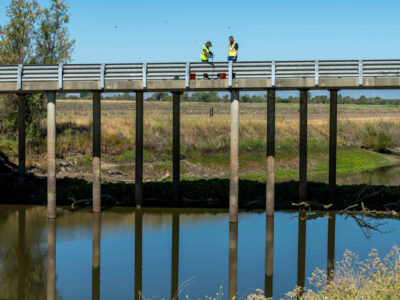Water Quality Monitoring Programs Begin April 30th
The water quality monitoring under the Rice Pesticide Program (RPP) and Irrigated Lands Regulatory Program Waste Discharge Requirements (WDR) will begin on April 30th.
The RPP monitors for thiobencarb for 10 consecutive weeks at 4 agricultural drain sites and one site in the Sacramento River near downtown Sacramento. The monitoring program for the WDR will commence in May at the same 4 agricultural drain sites. The WDR program monitors 2 selected pesticides and general water chemistry and includes pyrethroid and toxicity monitoring at select locations. The surface water programs will continue until mid-summer. Groundwater monitoring for nitrates at 11 select shallow wells across the rice-growing areas of the valley will be conducted in August.
Additional monitoring may be conducted in each program at upstream locations to better understand the sources of last year’s detections of thiobencarb and pyrethroids. The results of the water quality monitoring programs are used by the Central Valley Water Board and other stakeholders to determine compliance with rice’s regulatory orders and to evaluate our industry management practices.
For more information, contact the CRC’s Industry Affairs Manager Craig Riddle at criddle@calrice.org or (916) 812-3468.



